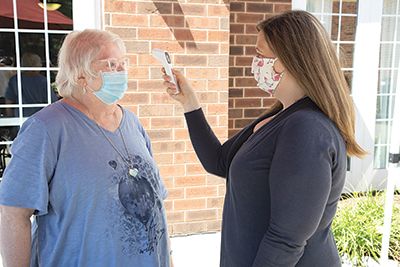Processing Your Payment
Please do not leave this page until complete. This can take a few moments.
-
News
-
Editions
-
- Lists
-
Viewpoints
-
HBJ Events
-
Event Info
- 2024 Economic Outlook Webinar Presented by: NBT Bank
- Best Places to Work in Connecticut 2024
- Top 25 Women In Business Awards 2024
- Connecticut's Family Business Awards 2024
- What's Your Story? A Small Business Giveaway 2024 Presented By: Torrington Savings Bank
- 40 Under Forty Awards 2024
- C-Suite and Lifetime Achievement Awards 2024
- Connecticut's Health Care Heroes Awards 2024
-
-
Business Calendar
-
Custom Content
- News
-
Editions
View Digital Editions
Biweekly Issues
- April 29, 2024
- April 15, 2024
- April 1, 2024
- March 18, 2024
- March 4, 2024
- February 19, 2024
- February 5, 2024
- January 22, 2024
- January 8, 2024
- + More
Special Editions
- Lists
- Viewpoints
-
HBJ Events
Event Info
- View all Events
- 2024 Economic Outlook Webinar Presented by: NBT Bank
- Best Places to Work in Connecticut 2024
- Top 25 Women In Business Awards 2024
- Connecticut's Family Business Awards 2024
- What's Your Story? A Small Business Giveaway 2024 Presented By: Torrington Savings Bank
- 40 Under Forty Awards 2024
- C-Suite and Lifetime Achievement Awards 2024
- Connecticut's Health Care Heroes Awards 2024
Award Honorees
- Business Calendar
- Custom Content
CT relaxes restrictions on indoor nursing home visits
 HBJ Photo | Steve Laschever
Individuals receive temperature checks before entering The Retreat in Hartford.
HBJ Photo | Steve Laschever
Individuals receive temperature checks before entering The Retreat in Hartford.
Family members and friends of residents at Connecticut’s nursing homes may now visit indoors with their loved ones, following an order Monday expanding access to those facilities.
The state Department of Public Health repealed its previous visitation requirement that residents obtain a doctor’s note saying their condition had deteriorated. Loved ones can now reach out to the nursing homes to schedule an indoor visit without having to consult a physician.
“Making the decision to limit in-person visits at nursing homes is one of the hardest things I’ve had to do as governor, but amid the outbreak of this pandemic that is impacting the lives of so many people in our senior population, I knew it was the right thing to do,” Gov. Ned Lamont said. “Each facility is strongly urged to develop a visitation plan and strictly adhere to it … so that we can keep this virus from spreading.”
As COVID-19 spread through Connecticut in March, Lamont banned visits to nursing homes except in end-of-life situations. The order was amended in late August to permit indoor visitations with a doctor’s note. Outdoor gatherings were also allowed at many facilities.
The Centers for Medicare and Medicaid Services earlier this month issued new guidelines allowing indoor visits so long as community spread is limited and certain precautions are taken.
The agency defines “low” to “medium” community spread as a COVID-19 positivity rate of 10% or lower, and requires visitors to wear face coverings, practice hand hygiene and maintain six feet of social distance.
Nursing homes must identify a space – a cluster of rooms, or a dedicated common area – for the gatherings and clean those spaces after each visit. Visitations must be scheduled in advance, and the number of guests per resident at a time may be limited.
Facility leaders must come up with a strategy to restrict the movement of guests (so they’re not wandering the halls). Some are considering new entry and exit points and separate bathrooms for visitors, along with purchasing more protective gear and cleaning supplies.
“It’s going to be good for the residents’ wellbeing to get emotional support from family and friends,” said David Skoczulek, vice president of business development for the iCare Health Network, which owns 11 nursing homes in Connecticut.“We’re definitely going to be ready for it.”
Homes will have to screen visitors by taking their temperature and asking questions about symptoms, travel and exposure. COVID-19 tests are recommended for visitors, but not required by CMS. Deidre Gifford, the state’s acting public health commissioner, said the decision to test visitors will be left up to each nursing home. Either way, she said, staff at those facilities must be diligent about adhering to the rules.
“We understand the significance of social isolation and the importance of connection between family members and residents,” Gifford said. “We also understand how fragile the low level of infection is that our nursing homes have worked so hard to achieve. So we want to keep it that way.”
“It’s going to be very, very important that the nursing homes are strict about the mitigation measures,” she added. “I think those are going to be difficult for families, but … I know that family members don’t want to see infections introduced back into nursing homes either.”
The state already is paying for the regular testing of nursing home workers (it spent an estimated $30 million between May and August), and has signaled that it won’t pick up the tab for visitor testing.
More than 2,800 nursing home residents have died of coronavirus in Connecticut, and more than 8,800 have been infected.
The visitations are subject to other circumstances. To allow family members inside, a home must be COVID-19 free for 14 days, staff must monitor guests who may have difficulty complying with the rules, such as children, and facilities must limit the number of visitors per resident based on the size of the meeting space.
If the positivity rate in a community exceeds 10%, visitations should only occur in compassionate care situations, such as an end-of-life scenario, the CMS regulations say.
Many families have been advocating for looser restrictions on visitation.
“With the [low] infection rates that we’re seeing in nursing homes right now, we think we’re in a spot where visitation needs to be a priority,” Anna Doroghazi, associate director of advocacy and outreach for the AARP in Connecticut, told The Mirror. “Loneliness is the next crisis that we have to address.”

2022 Giving Guide
This special edition informs and connects businesses with nonprofit organizations that are aligned with what they care about. Each nonprofit profile provides a crisp snapshot of the organization’s mission, goals, area of service, giving and volunteer opportunities and board leadership.
Learn more
Subscribe
Hartford Business Journal provides the top coverage of news, trends, data, politics and personalities of the area’s business community. Get the news and information you need from the award-winning writers at HBJ. Don’t miss out - subscribe today.
Subscribe
2024 Book of Lists
Delivering Vital Marketplace Content and Context to Senior Decision Makers Throughout Greater Hartford and the State ... All Year Long!
Read Here-
2022 Giving Guide
This special edition informs and connects businesses with nonprofit organizations that are aligned with what they care about. Each nonprofit profile provides a crisp snapshot of the organization’s mission, goals, area of service, giving and volunteer opportunities and board leadership.
-
Subscribe
Hartford Business Journal provides the top coverage of news, trends, data, politics and personalities of the area’s business community. Get the news and information you need from the award-winning writers at HBJ. Don’t miss out - subscribe today.
-
2024 Book of Lists
Delivering Vital Marketplace Content and Context to Senior Decision Makers Throughout Greater Hartford and the State ... All Year Long!
ABOUT
ADVERTISE
NEW ENGLAND BUSINESS MEDIA SITES
No articles left
Get access now
In order to use this feature, we need some information from you. You can also login or register for a free account.
By clicking submit you are agreeing to our cookie usage and Privacy Policy
Already have an account? Login
Already have an account? Login
Want to create an account? Register
Get access now
In order to use this feature, we need some information from you. You can also login or register for a free account.
By clicking submit you are agreeing to our cookie usage and Privacy Policy
Already have an account? Login
Already have an account? Login
Want to create an account? Register






0 Comments